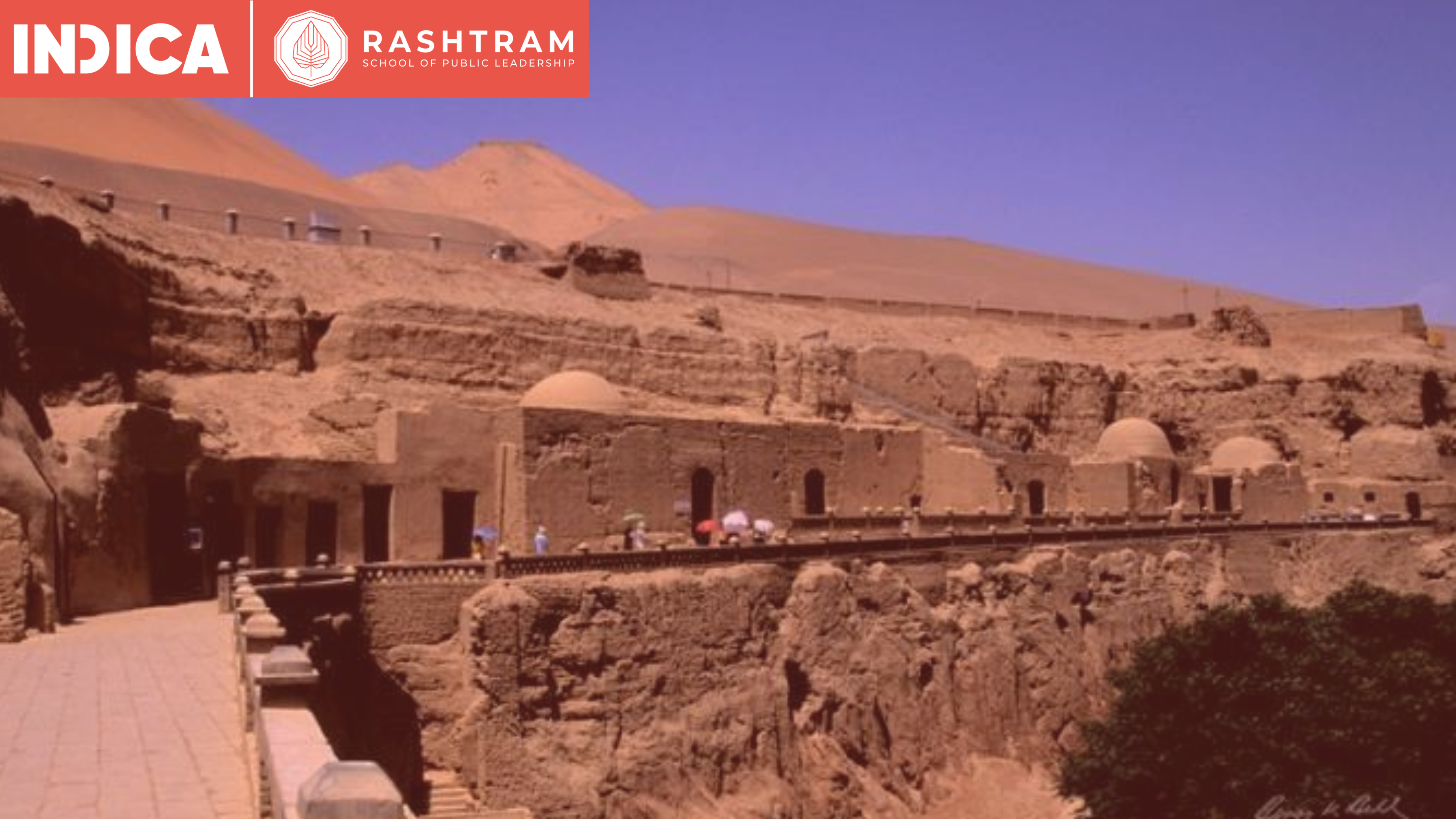Unidentified vigrahas were found in many of the homes in these ancient cities frozen in time and buried in the sand...
By Dr Pankaj Saxena, Director For Centre for Cultural Studies
Modern Indians don’t realize what a formidable border the Great Himalayas are for India. For most of our history, the Himalayas have divided Asia into two very different but very dominant cultural spheres: Indic and Sinic. This does not mean that Tibet was a part of China but the impassability of the Himalayas extended to the formidable cold plateau of Tibet and this massive combine of the mountains and the cold plateau separated two great civilizations: India and China.
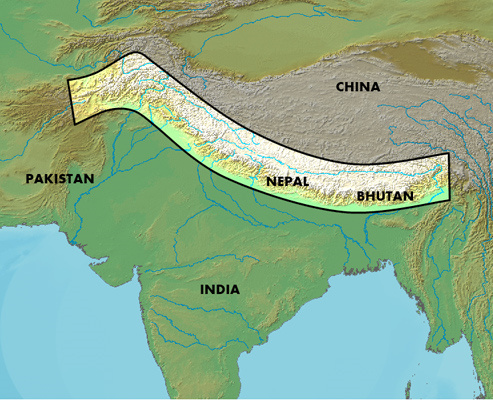
The Himalayas run in a continuous line from Afghanistan and the Pamirs to modern India’s boundary with Myanmar in the South. While in the north and the mountain ranges are the highest, in the east, there are gorges so deep that sunlight remains in the valley for only one hour a day. Just outside the boundary of Arunachal Pradesh, the three great rivers of Asia, the Yangtze, the Mekong, and the Salween flow in these deep gorges that are just fifty kilometers apart at some places but it is impossible to cross them. Coming down into Myanmar once again the mountain ranges follow and then some of the densest jungles in Asia – the tropical rain forests of South-East Asia kept up the barrier between the two civilizational spheres.
This boundary becomes even more formidable as Tibet is topped in the North by the Kunlun Mountains and then the Taklamakan desert, one of the most formidable and unforgiving deserts in the world. This desert is framed on three sides by the mountains: in the south by the Kunlun, in the north by Tien Shan, and in the west by the Pamirs. But the fourth side is not hospitable either and there are two successive deserts called the Lop Nor desert and the great Gobi desert of Mongolia running all the way up to Siberia.
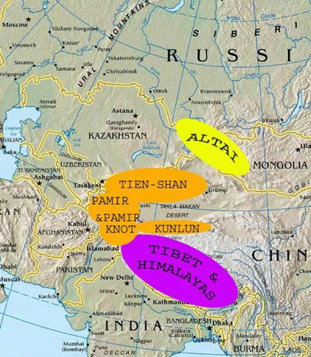
The boundary was generally impassable for armies to cross, impractical for populations to merge, but not impossible for determined individuals to cross. And from time to time, the cultural exchange from India to China has enriched the religious and cultural life of China. India’s greatest cultural export to China – Buddhism led to a history of repeated contacts between pilgrim-scholars.
Determined Indians have crossed these borders, again and again, to take the knowledge and deities of India to China. And in some cases, entire dynasties have migrated from western India and established towns and kingdoms in Eastern Turkestan and even inside China proper.
There are two paths they could take. On was via Afghanistan, through present-day Turkmenistan and other Central Asian republics. The other was through the north, going through the Karakoram Pass into the Eastern Turkestan, arriving first in the great oasis towns of Kashgar and Yarkand and then proceeding in two Silk Routes going through the north and south of the Taklamakan desert.
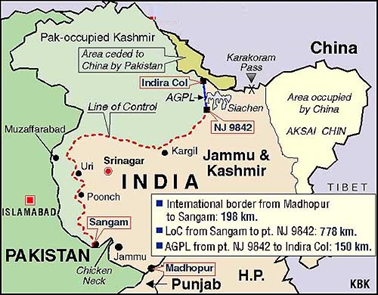
This resulted in a great Hindu-Buddhist civilization flourishing throughout what is now the Sinkiang-Uighur Republic and even beyond in the border provinces of mainland China. This civilization straddled the Indian and Sinic cultural and geographical spheres in its various oasis towns like Kashgar, Yarkand, Khotan, Karakhotai, Karakhojo, Turfan, Dand-Uiliq, Dun-Huang, Urumchi, Kyzil, Kucha, Yotan, etc. Modern scholars upon its discovery even named it Serindian civilization and the artwork found there as Serindian art, for it had the imprint of both Hindu and Sinic iconography and art styles. (Foreign Devils…87)
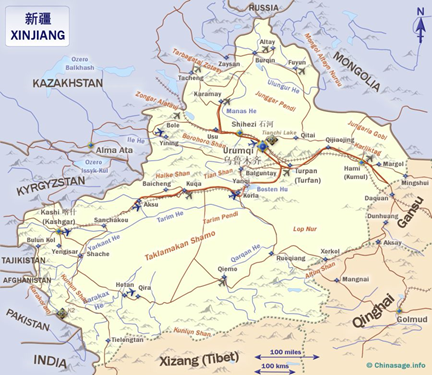
It is a lamentable fact that most of the modern scholarship just professes the Buddhist nature of these cities and it is no doubt that most of the artwork, murals, paintings, scriptures, and icons are found in these desert cities of the Taklamakan are Buddhist in nature. But what most of the books on the lost cities of Chinese Turkistan miss to mention is that at almost all of these cities, Hindu deities were also found.
A vigraha of Hanuman was found at Khotan. (Foreign Devils…41) Many vigrahas of Hindu gods were found as far as Bezeklik. (126) Unidentified vigrahas were found in many of the homes in these ancient cities frozen in time and buried in the sand. Sven Hedin one of the greatest explorers of Central Asia says upon one such finding in Keriya:
“Their hair was twisted in a black knot on the top of the head, and the eyebrows were traced in a continuous line, with a mark above the root of the nose, after the custom among the Hindus of the present day.” (Foreign Devils…63)
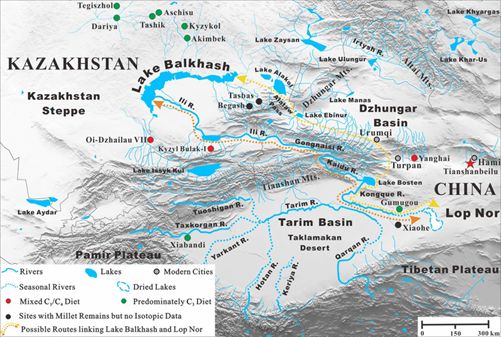
They miss mentioning that most of the ancient manuscripts that are found there, some of the oldest in the world, are in Sanskrit, at places like Dandan-Uilik, and at Dun-Huang. Very few now know that not only Sanskrit but Prakrit was also found at many of these places written in Brahmi script. They miss mentioning that Brahmi script was frequently found in these Turkestani oasis towns such as Kucha. (45) They miss mentioning that many lost Indian languages like Kharoshti figure in too many manuscripts in these oasis towns such as Niya. (89) They often miss mentioning that at Lou-lan, Swastika was found. (67) Hopkirk says:
“The language used throughout was, as Stein had surmised, an early India Prakrit written in Kharoshti script. No documents of such early date concerned with day-to-day life have yet come to light in India. Their discovery adds some credence perhaps to a local tradition, recorded by Hsuan-Tsang and also found in ancient Tibetan texts, that the Khotan region was conquered and colonized by Indians from Taxila about two centuries before the birth of Christ.” (Foreign Devils…92-93)
This is a discovery that should not only be celebrated in India but should be trumpeted aloud for everyone to know and hear. Every schoolchild in India should know how far India’s armies went and created far-flung empires. They should know that at one time in history it was India that was establishing empires and fighting inside the borders of mainland China. Hopkirk mentions again:
“At Lou-lan he made one other discovery of significance. In addition to the rich haul of Chinese official documents and papers, he also brought to light quantities of Kharoshti tablets. This was something of a surprise to Stein, who wrote later: ‘I had scarcely ventured to hope for records in ancient Indian script and language so far away to the east.’ These records indicated, Stein explains, that the Chinese military authorities had allowed the indigenous administration to continue undisturbed in the hands of the local ruling family. The discovery of these Kharoshti documents raised another interesting possibility. They seemed to indicate that, at some time in its history, Lou-lan – on the very frontiers of China – had served as a far-flung eastern outpost of an ancient Indian empire of which modern scholars had no knowledge.” (Foreign Devils…154)
One would do well to remember that Lou-lan does not even lie in the Taklamakan but in the Lop Nor desert, very near the Mongolian border and very near Siberia. That an Indian empire was flourishing in the medieval ages here, right under the nose of China shows India was not just mighty in knowledge but also in military power.
They miss mentioning that in Dun-Huang, one of the greatest cities of this region and which yielded the most number of manuscripts, paintings, and artwork of this civilization, many Sanskrit manuscripts were found. Dun-Huang is not even in Eastern Turkestan, but in China proper, for it lies in the Gansu province of China. Dun-Huang is the city where the Jade Gate used to lie, the Gate which symbolized the boundaries of China proper, west of which no Chinese town would be found. In the West of this lay the Silk route and so many possibilities. (Foreign Devils…167)
It might surprise Indians today, but from 300 BCE to around 800 CE, not only Indian merchants and scholars but sometimes even kings and dynasties crossed impassable barriers to take their culture and civilization to the oasis towns of the Taklamakan and even beyond.
This cultural contact came to a sudden demise during the middle ages when Islam burst upon the scenes. The sword flashing devout Muslims who came in hordes from Persia not only destroyed the Silk Route connecting India, China, and Europe, but also the oasis towns of Central Asia and particularly the Taklamakan and Eastern Turkestan. These oasis towns flourished in the trade between these three civilizations and when this trade was disrupted by Islamic armies these towns faded away.
But the story is seldom that simple with a Monotheistic religion. Islam, as is well known, had an intrinsic hatred of icons and vigrahas of Buddha and any other deity. These oasis towns of Eastern Turkestan were full of grottoes, paintings, murals and rock-cut monoliths of Buddha and various other deities. All of these were desecrated by the devout Muslims. The inhabitants were massacred, converted, or driven away. As a result, these oasis towns also died a sudden death in many cases.
This happened all over Central Asia, but in the Taklamakan desert, the signs of this former great Hindu-Buddhist civilization remained preserved due to the excellent preservative conditions: extreme dryness. It was these remains that were discovered during the First Great Game when great European explorers and Great Game players like Sven Hedin, Aurel Stein, Francis Younghusband, Albert von Le Coq, Paul Pelliot and Langdon Warner, and others were scouring the former Silk Routes and the forgotten hot and cold deserts, mountain ranges and oasis towns of Central Asia.
Contrary to the ‘India never invaded anyone’ syndrome which tries to convert a misunderstanding of India’s history about its ‘always peaceful nature’ into a virtue, India did go out, invade other countries, and did create empires that were far-flung. And they did not just do this via the sea route. They did not just do it in small kingdoms and countries like the ones in South-East Asia. They went ahead and created kingdoms in the middle of the deserts at the borders and even inside the borders of some of the greatest empires in the world – the Chinese Empire.
This glorious legacy was curbed for a few hundred years when India was reeling under the Islamic invasions. But as soon as the British became established in India, individual Hindus started going to Central Asia towns and cities and established trade relations with them. They even helped the British create influential vassal cities in Central Asia. But that is the story of the next article in the series.
Suffice here to say that it was only after independence that Indian leaders abandoned all attempts at geopolitics and stopped extending Indian soft power to foreign countries and nations. Under Nehru, we truly became frogs in the well.
This article was first published at indiafacts.org.
References
- Hedin, Sven Anders. Central Asia and Tibet: Towards the Holy City of Lassa. Createspace, 2015.
- Hedin, Sven. Through Asia. Books Faith, 1995.
- Hopkirk, Peter. Foreign Devils on the Silk Road: The Search for the Lost Treasures of Central Asia. John Murray, 2006.
- Keay, John. When Men and Mountains Meet: The Explorers of the Western Himalayas, 1820-75. Archon Books, 1982.
- Stein, Aurel. On Ancient Central Asian Tracks. South Asia Books, 2011.
